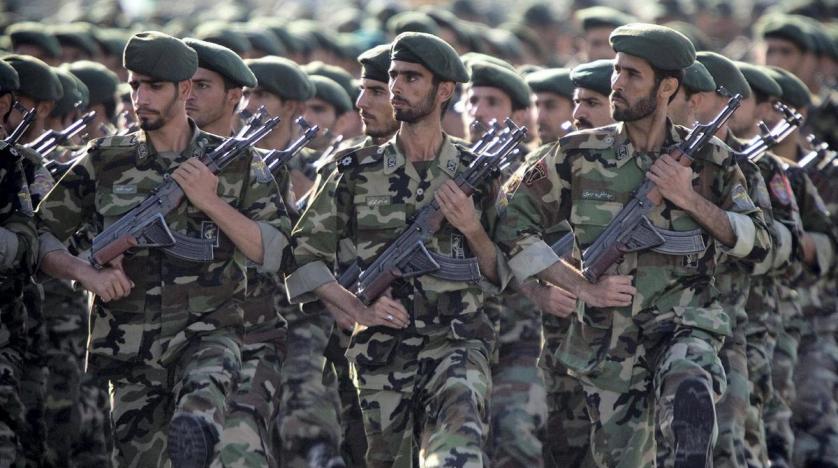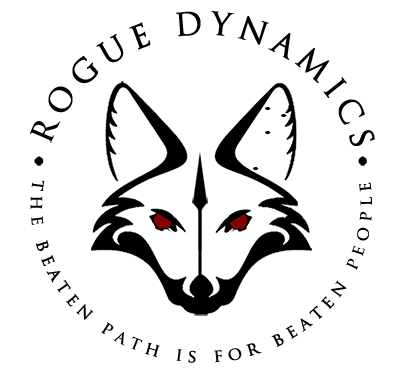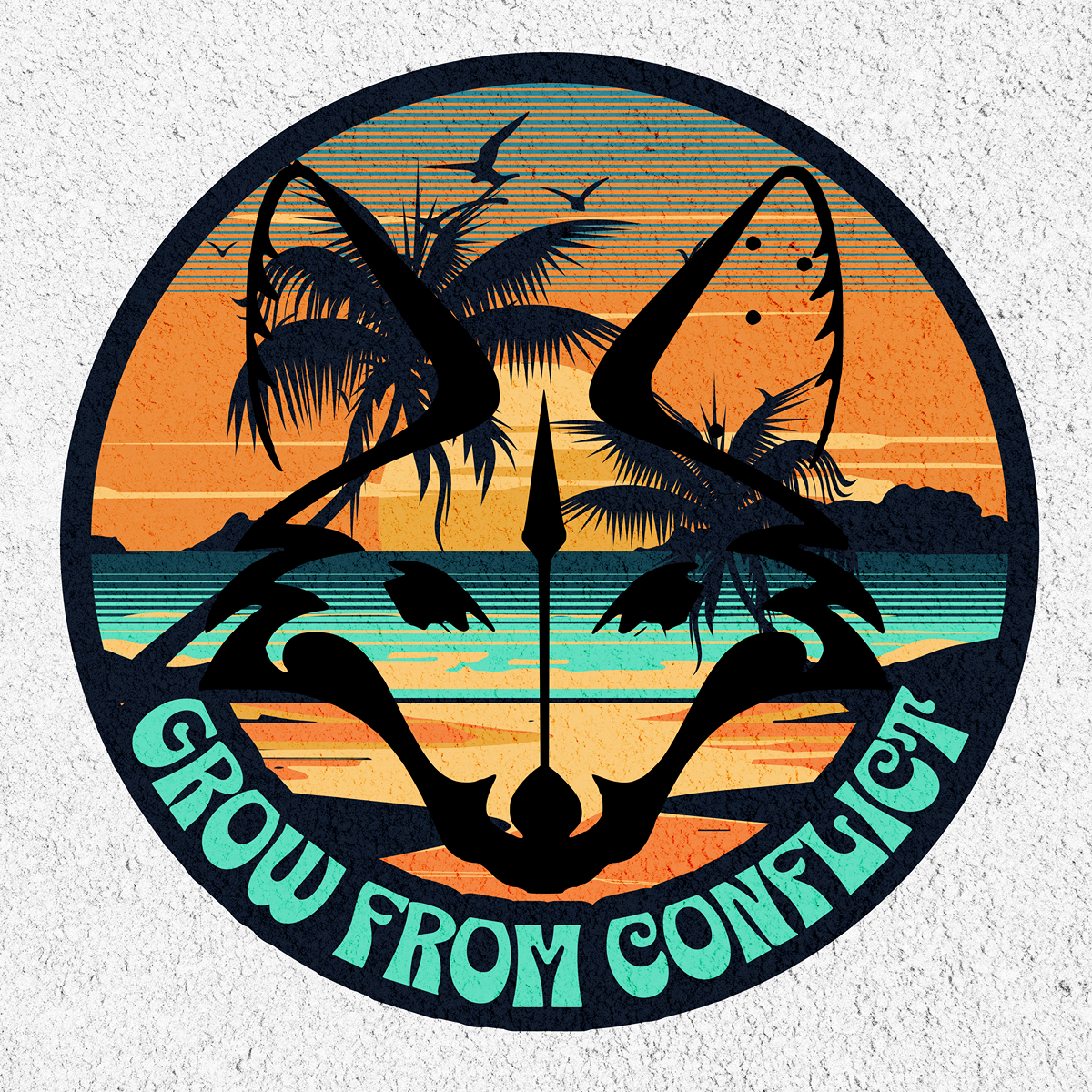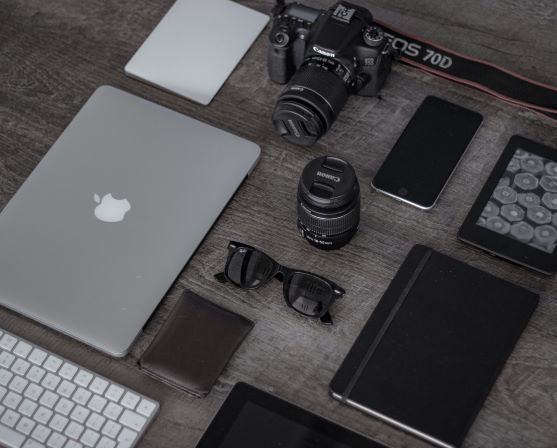
InfoMullet - The Soleimani Strike in Context
TLDR Up Front:
Soleimani was a crucial fulcrum in Iran’s military, diplomatic, and intelligence efforts in the Middle East for the last 25 years. His death brings many immediate questions: was it legal and are we now at war with Iran? But the more important questions are what no one knows. What does a post-Soleimani Middle-East look like for both players local to the region and the foreign powers with interests there.
Full Context in the Back:
First – who was General Soleimani? Why all this attention? I’ve been struggling to find an American-friendly metaphor to describe General Soleimani concisely all night. Frankly it’s not easy because rarely in modern times do you see so many capabilities wrapped up into a single individual who has superior competence in each area. But imagine the American Revolution and taking the military and intelligence role George Washington played and combining it with the foreign diplomacy and political savvy of Benjamin Franklin. That's Qassem Soleimani.
He led Iran’s Quds, meaning “Jerusalem Force”, which was a part of Iranian Revolutionary Guard formed during the Iran-Iraq War. The Quds operated much like if you had combined US Special Operations Command, the Central Intelligence Agency, the State Department and a conglomerate of defense contractors in economic holdings. As far as the near-neighborhood of Iran went – from Afghanistan to Lebanon, it all ran through Soleimani. I’ve been following him for years now and will link several good biopics at the end of this post that explain his background and context because at an objective distanced level he’s a fascinating individual.
But those who think that Soleimani was “not at the war” with the US are demonstrably ignorant on that topic. He’s never *not* been at war with the US. And even if we forgive that because sometimes the US creates reasons to go to war with us, Soleimani was an ardent supporter and active participant of a repressive religious regime at war with its own people over much of this time. Past is prologue, and as far back as the 1999 student revolt in Tehran Soleimani, before 9/11 or any US intervention into the region Soleimani pushed Iranian President Khatami to crush the rebellion. That if he didn’t Soleimani would do it himself and initiate a coup to remove Khatami from power.
For as much as I admire his personal abilities and competence, the purposes to which Soleimani has aimed those skills were to increase oppression and suffering. Not just as an anti-colonist freedom fighter within his native lands, as many will mistakenly believe him to be, but as part of an expansionist aggressive empire-building strategy of regional hegemony. If we were to discuss the top-five individuals most responsible for human suffering in the middle east we could argue the individual ranking between Bush, Cheney, al-Baghdadi, al-Zarqawi and Soleimani, but have no doubt the Shadow Commander would be in that top five. A quick review of his activities.
The Quds, under Soleimani’s personal direction began operating covertly in Iraq shortly after the invasion began in organizing Shia resistance. Although we can lay the blame for the Sunni-Shia war to al-Zarqawi’s Al-Qaeda in Iraq (AQI) efforts, it takes two to tango and the death squads on the Shia side matching their Sunni counterparts were being led, trained, and equipped by the Quds.
The Quds also supplied into Iraq and Afghanistan very sophisticated shaped-charge bombs, often mistakenly reported as IED’s though there were nothing improvised about these. Most IED’s were put together with materials on hand and a YouTube video. The devices the Quds supplied were 100lbs of shaped charge in a sophisticated package. They could lift a 25,000lb M-ATV MRAP completely off the ground high in the air and crack it in half like an egg. One of the lingering images I’ll never forget is the aftermath of this kind of attack. And although the Quds weren’t the most frequent user of IED’s in Iraq and Afghanistan, it is these sophisticated weapons that caused the most deaths. Estimates vary, but a reliable number puts the total around 700 or more US personnel killed by these IED’s, more if you count direct actions against coalition soldiers signed off on Soleimani.
But Soleimani wasn’t just a combatant. The Benjamin Franklin side of him enabled him to be a brilliant diplomat in Iraq creating political depth and patronage in the power vacuum left by the invasion. People will glibly forgive President Obama’s premature withdrawal with no significant stay-behind force from Iraq by saying dismissively “well the Iraqi’s didn’t want us there.” What they don’t realize is that Soleimani was the man behind that. He showed up to play while the US stayed distant during the crucial 2010 parliamentarian elections. In those elections al-Maliki, backed by Iran and Soleimani, came in second in results to al-Allawi, backed by the US. But Soleimani was on the ground with the cash, the smiles, and the threats when needed working the personal politics. So, when it came time to form the coalition and determine the President, al-Maliki came on top. The shift from al-Allawi to al-Maliki had a direct result to increasing tensions between Arab Sunni and Arab Shia ethnographic groups which contributed to ISIS’s reemergence in Sunni protest camps in Fallujah in late 2013.
With the rise of ISIS and the Syrian Civil War, General Soleimani shifted from near-defense of guarding-space in Iraq’s neighbors to expansion in the region. Quds commanders were frequently spotted in Syria supporting the Assad regime and the Basiji, a paramilitary force used to suppress domestic dissent in Iran were brought in. But the Basiji, more accustomed to beating protesters with sticks, weren’t prepared for the heavy fighting in Syria or needed in Iraq to stop Iraq. So Soleimani, through his long-term partner al-Mohindes (also killed in the same strike) organized the rise of the Popular Mobilization Forces (PMF). These PMF’s were non-state actor, armed militias, consisting of Arab Shia and supplied with weapons and training by Iran. Unlike the paramilitary forces of the Basiji these could be better described as well-trained conventional fighters. The PMF’s did not just limit themselves to acting in self-defense against ISIS in their homeland but were used by Iran to bolster the Syrian regime with additional fighters. (I’ll include some reporting from LJW in the first link on this aspect.)
And after the degradation of ISIS and collapse of resistance in the Syrian Civil War the PMF’s did not disband. Instead they are still an active operating force loyal to Iran operating outside the control of the Iraqi government. Most recently they are blamed for dozens if not hundreds of deaths of Iraqi protesters using sniper fire and other tactics to break the dissent they saw as a threat to Iranian influence.
This is glossing over a lot – Soleimani also had his hands in Hezbollah of Lebanon, the Houthis in Yemen, the Haqqani Network of Afghanistan and cut deals with al-Qaeda and a dozen other things I could go into. It’s not entirely clear what role he had directly in the escalating tensions in the Gulf with attacks on oil shipping, infrastructure and Houthi incursions into Saudi Arabia, but given his position as second in the Iranian government it’s hard to imagine that strategy went forward without his blessing. It’s equally unlikely to imagine him offering much opposition, but support, to the violent crackdown of Iranian protesters that have left a thousand dead and four thousand wounded just in December.
If you could crystalize all the complexity of balancing foreign ambition with looming domestic collapse, you could personalize that complexity in Soleimani.
I offer all this as background because it’s important context to understood who Soleimani was, not just by acts but also the crucial role he played as the centerpiece of so many foreign interactions, to discuss “what happens next.”
Because killing a major military commander of a sovereign state, even one with the pedigree of Soleimani has consequences.
First I’ll briefly touch on the debate on the legality of the action, just because it’s going to come up a lot by people who understand legality only in the context of which President they support. Soleimani was a valid target. He is a military commander in a zone of conflict wherein Congress has already authorized US military force, actively coordinating forces engaged in hostilities against the US, both in the past, and over the few months leading up to this event. He was in the company of two PMC commanders who had engaged in direct, and recent hostilities against US forces. And it’s both reasonable to believe, and there may be intelligence, that they were actively planning more attacks as that’s been a pattern going on now for more than 15 years. That’s a valid imminent threat-scenario that by the laws of war justifies such a strike.
What doesn’t naturally follow however is that just because he was a valid target the strike was a good idea.
I’m not a fan of targeted drone-strikes to remove leadership of terror organizations. There’s solid research on effects but in general taking out charismatic leaders of non-state actors usually only results in them being replaced by their seconds or thirds. However, Soleimani was not just a “charismatic” leader of a non-state actor. He was the personification, often by personal relationship and command, of Iran’s foreign relations and military capabilities in the region. He was also exceptionally competent. One could argue that removing him, his capabilities, and his experience from the field is worth a division or two. It’s hard to imagine that the next guy in line, even if a protégé he’s been mentoring for years – would have the same combination that comes around only once in a few generations.
None of this is to say such a strike isn’t without high stakes.
Second – I think this strike may improve our relations with the “young street” of Iraq, typified by the kinds of protesters who were getting gunned down en masse by the PMF in the last few months. Many of these Iraqi’s are young enough to have no memory of Saddam’s regime and only a toddler’s perception of American occupation. The most recent experience they’ve had with oppression, corruption, and violence is at the hands of the PMF and Iran.
Third however they probably won’t show such sentiments publicly. And they won’t because we don’t have the forces in the theater, especially in Iraq, to protect them from what comes next. Nor does the Iraqi government who we’ve put in a huge quandary.
And what comes next at least on the ground is an explosion of anger from the PMF’s. Organized under Soleimani and al-Mohindes they are not operationally degraded. They remain at full strength. What has happened is we’ve decapitated their command & control at the country level both by killing their leaders and the realization that the cell phones they use are compromised. Over the next few days several dozen different militias are all going to be dumping their phones and coming to individual local-commander decisions of what to do next. And that’s where the risk of reprisal and sectarian attacks increases.
And they aren’t the only warbands present in Iraq. Muqtar al-Sadr has activated his Mahdi army. ISIS is still around as a clandestine network and a limited insurgency in the northern portions of the Sunni triangle. The Kurds, smarting from Iraqi betrayal over Mosul and Kirkuk, seeing a weak government in instability make a move.
The immediate risk of Soleimani’s death is contagion of instability leading to the collapse of the government or even a new Iraqi Civil War. And we simply don’t have the forces in place to have much of a say in whether that happens or not. Any instability in Iraq is contagious to the rest of the region and gives an opportunity for ISIS to play the same strings they played in the past.
These local groups may also be gunning for any American personnel not on a FOB come sundown. Hostage-taking and reprisal killings of Americans or foreigners-by-mistake is a high risk, even if not a strategic one.
A few of these PMF’s may mistake the boogaloo is on and attack US installations directly in force. Which is a bad idea. The Marine FAST Team of several companies reinforced the Embassy in Baghdad and a battalion of the 82nd Airborne is on standby in Kuwait. Not to mention the airpower available as the show-of-force of Apache overflights a few days ago showed. Cooler heads may prevail and the PMF’s may simply escalate the normal routine of mortar and rocket attacks. But that’s par for the course and our bases are well designed to withstand such. Keep this in mind as the spotlight effect, where the media rushes to cover Iraq and breathlessly reports each incident, that you’ll be “seeing” a lot more of these in the coming day, but the reality is this has been the status-quo campaign of rocket attacks begun in October by Soleimani.
I don’t think any of this will come from the Quds or Iran. The Quds are extremely disciplined and competent, akin to our own Special Forces, so they’re not going to drop everything and run out in the streets and rush Area 51. There’s a common timing rhythm embedded in the Iranian military psyche from the days of the Revolution. This timing uses Shia religious rites of mourning from the death of someone as sequencing functions. These dates are the 3rd, 7th and 40th day after death. Iran has just announced three days of mourning. I don’t mean to say the Quds will ever forget this. Regardless of what happens in the next few months: Trump, Pence, and Esper are going to spend the rest of their lives looking over their shoulder. This is like taking out the head of Mossad, there’s no expiration date on personal retaliation.
Nor is Iran itself as a sovereign state with much at stake in the region stand by over the intermediate term. We may not have the asymmetric capabilities to contain instability in Iraq outside of protecting our installations, but we have more than enough conventional firepower to counterpunch any moves they make in the Gulf on that front. Israel has proven repeatedly in Syria over the last two years that for all their rapid advances in effectiveness, Iran airpower and defenses remain no match for modern airpower like we can deploy.
Iran knows that and I think where we’re going to see the most significant responses is in the soft-underbelly of areas we can’t protect conventionally as well. Beyond hostage taking and retaliation assassinations the most obvious soft-target is oil. If you want to put the hurt on the US raise oil prices sharply and even though most our supply doesn’t come from that region oil is a fungible commodity and a price increase anywhere is a price increase everywhere. I would expect an increase in drone-strikes targeting key Saudi oil infrastructure like we saw over the summer to try and increase. Potentially more attacks on oil tankers, but the US Navy is in the region and on guard for that. There is an increased likelihood of domestic attacks on US soil. Soleimani’s only said within the last year something like “you have no idea how far our influence extends.” But an increased risk is different from a high probability. And unless it’s a rogue operation I don’t see a domestic terror attack all that likely.
As always – those calling this the start of World War III have their heads up their proverbial. Times were simpler when people experiencing a mid-life crisis just went out and bought a car or had an illicit affair. Now they go onto social media and proclaim every illness is the next Black Death.
A global spanning conflict, absent a direct invasion of Iran by the US provoking a Russian or Chinese response, or an Iranian invasion of the GCC sparking US and European response is hard to fathom. That doesn’t mean non-state actors around the globe might not pop off. Hezbollah and Hamas could strike at Israel, and Hezbollah now has regional influence to exert pressure. Quds had relationships with non-state actors as far flung as South America to Asia, and any of these may launch a quickie retaliatory strike in their neighborhood in homage to the Shadow Commander. Why this is unlikely to quick off larger newer conflicts is that these non-state actors are already often in conflict with their near neighbors. It’s not like Hezbollah or Hamas launching rockets at Israel hasn’t happened before. From a “net-new” perspective there’s little, in the next few days at least, that could happen of dramatic instability.
But we should make no mistake that we’ve altered the system structure of the region in ways that are impossible to predict. Despite the obvious conflict between US and Iran over many issues and the past bloody history they share, in the last year the two “enjoyed” (and I’m using that lightly) a system archetype of a controlled arms-race. Iran nudges up to just under the bar of retaliation and sits there for a bit. The US acknowledges, and either responds proportionally, or doesn’t. And Iran then nudges the bar a little bit more. But they were continually moving the bar up in increasing risk. The death of Soleimani removes that limiting constraint and could risk a rapidly escalating arms-race with large leaps between each escalation. That’s the rapid downward spiral that could create a real problem.
We’ve also changed the systems structure in Iran though, so we can’t predict what will happen until we know what plays out. Iran is a factionalist state. By factionalist I mean there are powerful factions that combine aspects of military, intelligence, political, and economic power into cliques, wielded by elites, each nominally under the Grand Ayatollah but all with their own independent base of power. Soleimani was the leader of one of those factions. Quds held a strong position of nominal independence within the Revolutionary Guard and Soleimani’s direct relationship with the Grand Ayatollah often pegged him as the next leader of Iran. All that’s changed now. The most important dynamics to play out in the next 72hours and few weeks may all be in Iran as those other factions’ scramble to dynamically reorder the state.
Other than that, I’m honestly at a loss in projection if only because Soleimani, and his personal style was at the heart of so much of Iran’s moves in the past that forecasting responses absent his presence is hard. Is the #2 taking his place cut in the same mold of the mastermind Go player? Or a more aggressive bold and direct confrontation type?
For example, it’d be easy to predict Iran stoking instability in Iraq, increasing civilian casualties and the risk of civil war in an effort to draw the US back into the region and pin them there. That’s exactly the move Soleimani would make.
But Soleimani’s gone. And because of the central role he played in the region over the last two and a half decades, no one can really predict what happens next.
-Tim Clancy (https://www.facebook.com/tim.clancy.313)




Noel Patricio
April 30, 2025
A Life-Changing Experience, Dr Kachi A Testimony of Gratitude
I would like to share an extraordinary experience that has transformed my life. I came across a remarkable testimony online forum about a powerful and renowned spell caster, Dr. Kachi. At the time, I was skeptical because I had never encountered anything related to magic or spell casting before. However, the story of Dr. Kachi’s work resonated with me, and I decided to give it a chance. For years, my family and I struggled financially, and despite my best efforts, I never had luck winning the lottery. I loved playing, but winning seemed impossible. Everything changed when I connected with Dr. Kachi, who provided me with a winning lottery number through a powerful spell. In just 24 hours, I was able to play the lottery and won the Lotto 6/49 prize, a remarkable $68 million cash prize, on September 27th in the Gold Ball Draw. This incredible win has completely changed my life and the financial well-being of my entire family. After 10 years of trying unsuccessfully, I am now living my dream life. I am beyond grateful to Dr. Kachi for his assistance, Dr. Kachi has truly been a blessing to me and my loved ones. I encourage anyone who is interested to reach out to Dr. Kachi for guidance. his email drkachispellcast@gmail.com. Also reach him text or call +1 (209) 893-8075.Thank you once again, Dr. Kachi, for making my dreams come true.